One of my most vivid memories of feeling deeply part of the natural world comes from being a teenager in the middle of Lake Valhalla, a cold, clear mountain lake near Stevens Pass in Washington State. Being IN the lake, rather than merely looking at it from the edge, changed that hike and my experience of the natural world. As I floated on my back and looked up from water level to the mountains towering above me, I felt myself to be part of this physical world in a very tangible way; that experience embedded the lake and those mountains deeply and permanently into my mind and heart.
It is something like this that is behind the efforts of Norway’s Scenic Route project, in which art, design, and architecture have been built along 18 of the smaller, less travelled roads of Norway. The purpose is to draw people into areas of beauty that are less frequented by travelers and usher them into a new perspective of the land. The pieces are tailored to each specific location, reinforcing the distinctiveness of the travel route and reflecting the inherent character and mood of each site. Although the art or architecture does capture people's attention, it primarily turns that focus toward the natural world it is pointing toward.
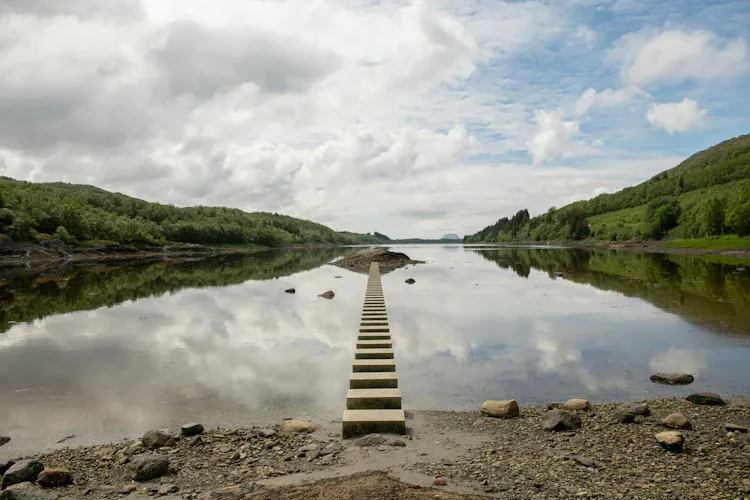
The Trælvikosen Tidal Installation and Rest Area is along the Helgelandskysten (County Road 17), the longest of Norway’s 18 designated Scenic Roads, which winds along the middle section of the eastern side of Norway. Finished in 2022, Trælvikosen was funded by the Norway Highway System and designed by Snøhetta, an architectural firm which has designed other interesting projects such as a wild reindeer viewing building, a Path of Perspectives, and an underwater restaurant that also serves as a marine research station.
There is a beauty and simplicity about the Trælvikosen project that I find deeply appealing. It doesn't appear complicated– 55 stepping stones leading to a small islet that rises above the water of the inlet ("vik" means inlet in Norwegian). The stones are about a foot and a half wide (500 millimeters), allowing two people to pass each other on the path while still keeping the path as narrow as possible. The stones are made of granite from a local source and are meant to blend in with the other rocks around them as well as the sand.
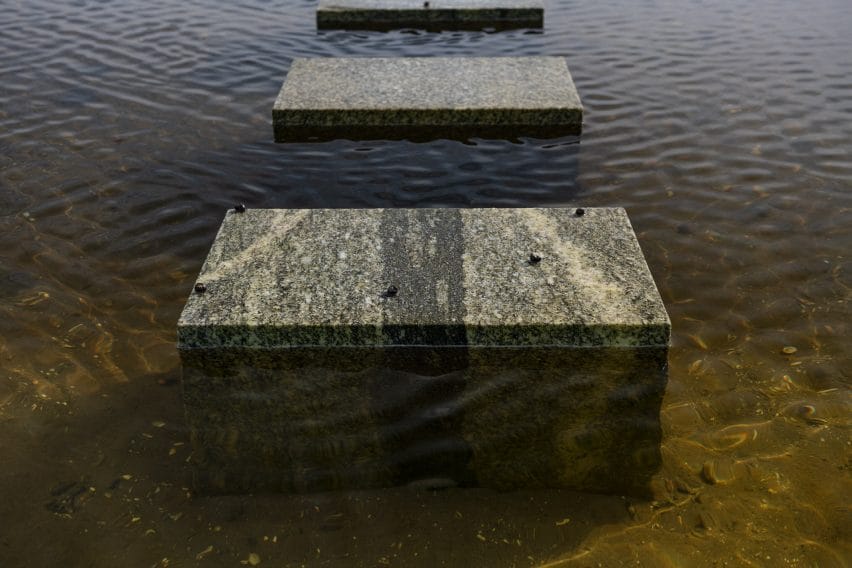
During construction, machines were moved in and out as gently as possible using construction mats. Four stones were tested in the inlet for a year in order to determine whether the foundation should be a cast foundation or crushed stones. (Crushed stones were decided upon). After construction, the topsoil was put back in place. Installation of the stones had to happen within a four-hour window of time when the tide was low.
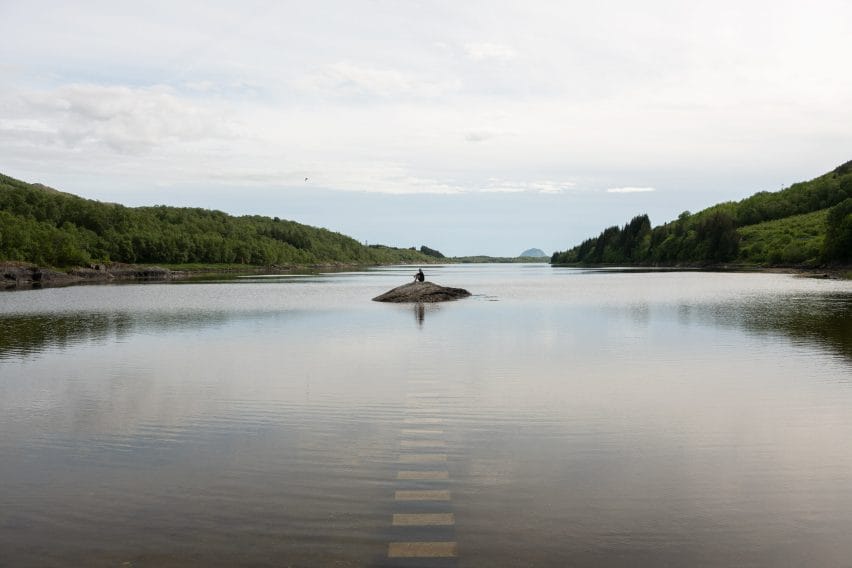
The “Rest Area" is meant to encourage just that. Instead of the quick pit stop common in such areas, the pathway draws people to stay longer than a quick minute, take a walk on the pathway, maybe linger and watch the tide either come in or go out.
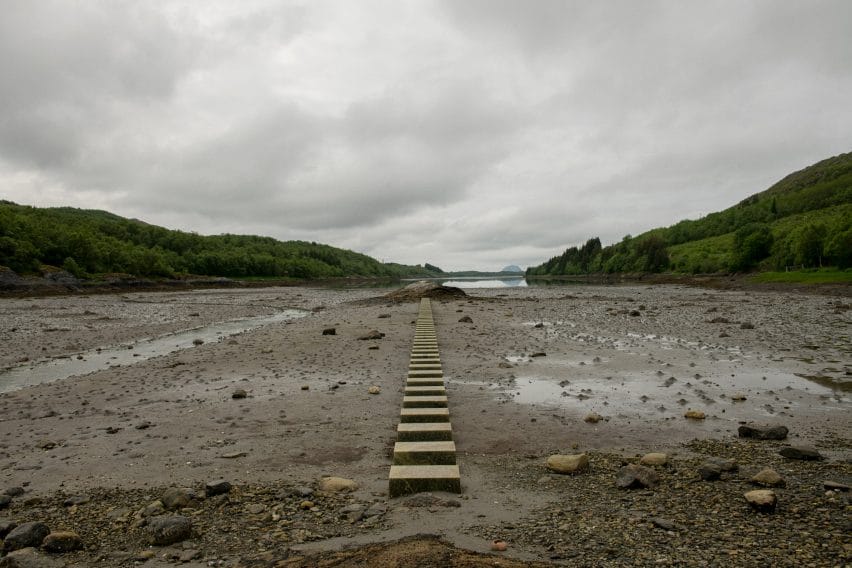
Specific design features of the pathway are meant to slow people down. The stones are large enough to step upon safely, but not big enough so that a person doesn't need to pay attention to where they are putting their feet. Also, with the space between each stone, people need to look down as they walk, drawing attention to what is in the water (or in the sand, depending on the level of the tide).
"We wanted the distance to be enough that you need to look down and concentrate when you walk, ensuring focus shifts to what is below and around you," according to Snøhetta lead landscape architect Thea Kvamme Hartmann.
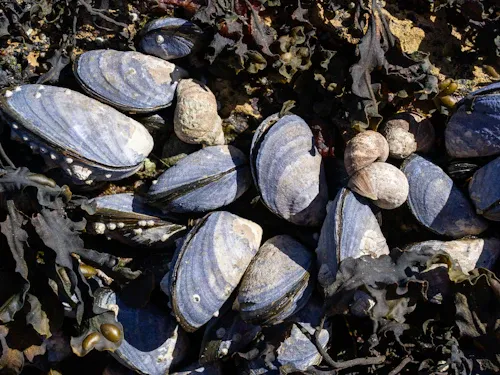
The main idea of the pathway is to slow people down, and encourage them to look, see, and appreciate the lugworm casts, the trails the snails make, the fish, the round stones that create interesting formations that are all visible when the tide is out. Taking your time also gives you a chance to see the changes that happen when the water level changes, how time makes some things disappear and other things appear. When the tide comes in, the picture changes, the stones disappear underwater; also the experience becomes completely different if one is wading through water on immersed stones in the sea rather than when the stones are a raised path across the sand.
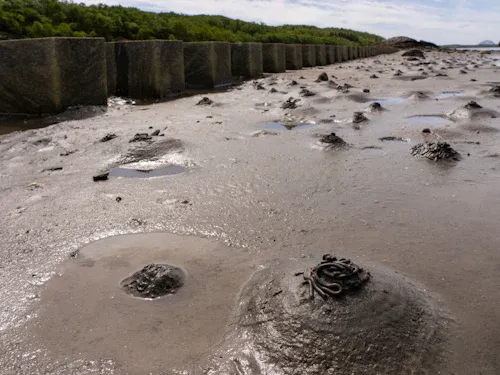
It reminds me of a straightened-out labyrinth, encouraging contemplation, curiosity, and openness. It is a much different experience to be in the middle of the inlet with the tide lapping around compared to viewing it from a vehicle as you pass by, or even as you stand at the inlet edge and look out on it. It is not unlike my experience in the middle of Lake Valhalla.
As the Kvamme Hartmann says, "The experience might also ignite new reflections on nature itself - and how we take care of it for the future. If we truly want to take better care of our nature, we also need more people to see and learn more about it."
Reflection Questions: When was the last time you felt deeply immersed in the creation around you? What habits do you have or could you work to start that could help you see and experience your place within the world more intimately and more joyfully?
Feel free to leave a comment below or contact me directly at louise.conner@circlewood.online.
Louise
Want to learn more?